
February 3, 2008
 CR Sunday Interview: Bernie Mireault… Interviewed by Bernie Mireault
CR Sunday Interview: Bernie Mireault… Interviewed by Bernie Mireault

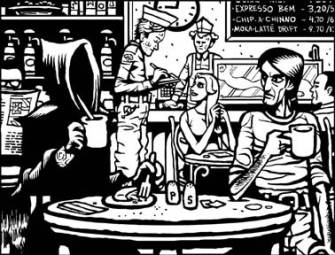
I've received several interviews where a publicity person -- or the artist themselves playing a publicity person -- had prepared the text beforehand. The frustration comes not in reading such pieces but in how adamantly many of those people refuse to be convinced I don't want the result.
Bernie Mireault's self-interview, which you'll find below, was a slightly different case in that 1) he sent it with no expectation I'd actually use the thing, 2) I'm interested in Bernie Mireault generally, and 3) it's not half-bad. Throw in the fact that I could decorate it with Bernie Mireault art, and I was happy to post it.
Bernie Mireault is a cartoonist's cartoonist, working a variety of projects over three different decades since entering into comics consciousness with his 1985 series
Mackenzie Queen. He is probably best known for
The Jam, the best work in the superhero tradition marked by the stripped-down heroics and inner nobility of
The Spirit produced by the indy comics generation. Mireault is a first-rate color artist and an all-around, fine cartoonist. I suspect that after we die all of us that were in comics at any time in the last twenty-three years will have to answer for his not being a bigger star.
So. Please nobody try this again, but here's Bernie and Bernie. -- Tom Spurgeon
An Interview With Bernie Mireault
By Bernie Mireault
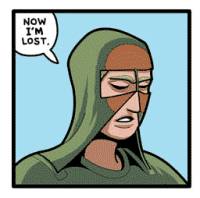
This interview was conducted by Bernie Mireault with himself on the first day of January, 2008.
Montreal, Quebec, Canada is in the process of receiving another two feet of snow and pedestrians have been sighted wearing cross-country skis.
Bernard Edward Mireault signs his work with a distinctive "BEM" monogram and has been writing and drawing comic since around 1978. His work reflects the unique blend of North American superhero, American Underground, Japanese and European comic art influences available within the Montreal comic art environment and ever-increasingly throughout the world.
A complete bibliography is located on his web site at
http://bem.spiltink.org
Click on "biblio" for a laboriously compiled work history, which we will spare you here.
The innovative qualities of his work have earned him a small cult following among comic art enthusiasts, some of them being his fellow cartoonists. It is in gratitude to those that are interested that he makes the effort here to document what's going on for him at the moment.
We join him now in his tiny, smoke-filled back-room studio.
INTERVIEWER: Happy New Year!
MIREAULT: Thanks! Back to work.
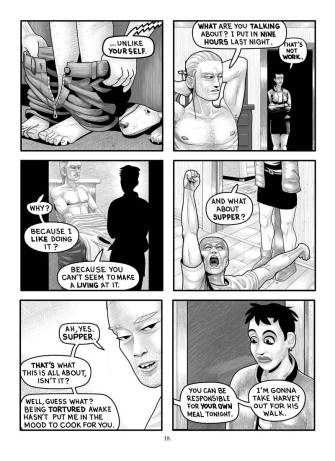 INTERVIEWER: What are you working on?
INTERVIEWER: What are you working on?
MIREAULT: I've got a lot of things going. First of all, way back in 2003 I received a
Canada Council grant to make a graphic novel, and I'm still working on it and trying to get it finished! It's called
To Get Her and features Gordie and Janet, the main characters from
The Jam, my chief narrative to date, chronicling the adventures of a low-rent version of a superhero with no superpowers complete with puzzled girlfriend and dog, in a "dystopian romantic comedy" to be about 150 pages long. I'm at pg. 102 right now and have to squeeze the work in between rent-paying jobs. This work has no publisher yet and is being represented by Kitchen, Lind & Assoc. LLC. Their web site is at
www.kitchenandlind.com.
One of those current rent-paying jobs I referred to is a newspaper-style strip featured on a web site dedicated to the ribald computer-animated Sci-Fi comedy,
Tripping the Rift -- check it out on the
Space Channel in North America or
SIC Radical in Portugal -- produced right here in Montreal by Cinegroupe Animation, with a little bit of help from China. I've been contracted to produce 52 strips for them to feature on their web site weekly and have just completed # 26. Halfway done! Check it out at
www.trippingtherift.tv. Click on comics/graphic novel.
It's been fun to work on. The print sizes of some of those strips are over six feet long and they'd make good scrolls. Notice I use feet, not meters -- or metres, as they say around here. No metric stuff for this guy, though! I grew up on feet.
 INTERVIEWER: Hahaha. you --
INTERVIEWER: Hahaha. you --
MIREAULT: Wait, wait! I'm not finished yet and I don't want to forget what it was I was going to say! Going off on tangents and never returning to the original thread is a big problem for me in live interviews and one of the main things that I was trying to head-off here by interviewing myself in written form. So much for that! I can't even control my writing. Oh well, at least I'll own the interview rather than someone else.
Okay, that was our first and last digression.
Back to the original thread: What I'm working on these days...
Another big job I'm doing simultaneously along with
Tripping the Rift has been the design and illustration of a 120-page book for young readers about the history of aboriginal land claims in Canada, titled
Your Home on Native Land, written by
Alan Skeoch and to be published by Jack Fruit Press, out of Ontario, in Canada. I've incorporated some basic comic art elements into the overall design of the book: profuse illustrations and the use of word balloon tails. Hopefully the result will be a friendly-looking, easy-to-read primer on the very worthy topic of aboriginal land claims and their history, to be published in Summer '08.
Last year around this time, I illustrated a book for the same company in their "Canadian Prime Ministers: Warts and All" series, on Canada's 8th Prime Minister,
Sir Robert Borden, and it's just been published. I'm finding that I enjoy doing this kind of historical-type stuff and hope to do more in the future.
What else? I've worked with local Montreal film producer
Ari Cohen and his company Rotating Planet on developing an adult 2D animated series for television called
SpaceHeads. Working with local Montreal fine artist/musician/radio personality/cartoonist
Howard Chackowicz on character designs and with Cohen himself, a bible for the series was created. The project is shelved for now, but who knows? I liked it.
I can do animation using Flash and get odd jobs in that department occasionally. One relatively recent job was to create a series of short animated "bumpers" -- little vignettes leading in and out of commercial breaks -- for an aboriginal version of the TV show
Pimp my Ride, called
Rez Rides, by
Beesum Communications here in Montreal. It was broadcast on
APTN, the Aboriginal Peoples Television Network, last year. On that job I helped animate the designs of another Montreal cartoonist,
Jesse Bochner.

I also do illustrations for John O'Neill's
Black Gate magazine several times a year. It's the reincarnation of a pulp magazine from the days of yore, published out of Illinois in the USA, and a lot of fun. I love reading through the short genre stories it features and look forward to doing more illustrations there.
Sometimes I color other people's comic art. The two jobs I've had there lately have been for
MR.Comics, a new Canadian publisher. I colored issues #1-4 of the six-issue
Revolution on the Planet of the Apes series they put out last year and I colored the lead story in an upcoming issue of
Hover Boy, a great political/superhero satire. Hopefully MR.Comics will grow into a permanent fixture in the Canadian comic art publishing environment, which desperately needs settlers.
I'll get the occasional commission via the internet and I'll sell the occasional piece of art that way as well but I still have pretty much everything I've done over the years. Scanning and backing up everything was/is a huge project.
I also have a band called Bug-Eyed Monster. Fellow Montreal cartoonist Howard Chackowicz plays drums, Andre Asselin plays bass, Chris Burns will sometimes lend a hand with guitar and I sing and play guitar. Mostly original music written by me. I've got around 30 of them. Never much more than three minutes long as a rule, with some clocking in at under two minutes. Rock ditties. Howard and Andre both play together as the rhythm section in two prominent local Montreal bands: The American Devices and Nut Sak, Chris Burns also plays in Nut Sak and many other bands besides. It's a great deal of fun playing with these guys and I hope to have some decent recordings soon.
That’s pretty much what I've been up to lately, unless you want to talk about the various challenges involved in family life with two older teenage boys, Isaac and Eli, and my lovely partner and fellow artist, Kathryn Delaney.
You know... All this talking. It's thirsty work.
INTERVIEWER: Would you like me to get you something to drink?
MIREAULT: A six-pack of
St. Ambroise Pale Ale would be lovely. Made right here in the city. Flush out the pipes and grease the wheels. Pip pip, toot toot!
----------------------------------------------------------------
-Interlude-
a bit of muzak. Listen... Wow! It's a robot version of the theme music from the old TV show,
Love Boat! Sounds like a hundred different doorbells playing in sequence. Interesting in a post-modern, ironic kind of way.
----------------------------------------------------------------
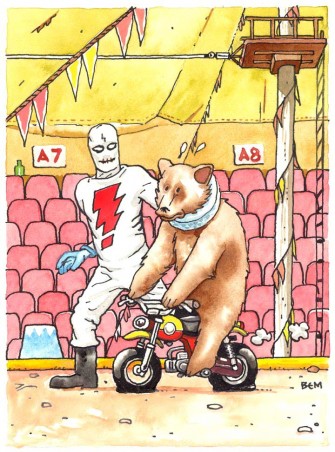 INTERVIEWER: Here you go. I hope you appreciate them. I was almost flattened by a cross-country skier getting them back here in one piece.
INTERVIEWER: Here you go. I hope you appreciate them. I was almost flattened by a cross-country skier getting them back here in one piece.
MIREAULT: I know, they're crazy. Thanks! I am now ready for the next question.
INTERVIEWER: You've been a cartoonist for around 25 years now and you've yet to have any commercial breakthrough whatsoever. What keeps you going?
MIREAULT: Obviously I just love to make comic art. Something about the combination of words and drawings put together just seems like great fun to me. I'm a storyteller and I think that comic art is the best tool in the toolbox. As far as making money goes, I come from a lower-middle class family here in Quebec. What's down for you may well be up for me. The economy here has been screwed as long as I've known it due to a bizarre, medieval-like political environment. The current government has pretty much outlawed the use of English in business and I feel that it limits development within that community, to say the least.

Now, I'm French myself, though I was raised as an Anglophone, but I find it impossible to identify with these people -- admittedly, only a very small, very vocal minority -- who cry oppression while trying to tell the people what language to speak, when and where. If we have to pick a language then I think we should all be speaking
Mohawk! They say they do it because they wish to preserve their particular culture, while Quebec's aboriginal people, the people whose land we all live on, are not even considered in the equation. It's an embarrassing mess that needs to be resolved asap before we can even call ourselves civilized, but there's no solution to be had as long as people continue to be selfish. And that's not a social behavior that's going to disappear overnight.
Personally, I believe that justice will continue to slowly evolve towards actual fairness and that eventually simple peer-pressure will keep us in line where it used to take police. As we work towards becoming better organized and better civilized, we'll solve problems like aboriginal land claims, housing and water and I believe Canada has a special role to play there. The eradication of world hunger will soon be technically possible and I believe that we can see this happen during our lifetimes if we all work towards it. Then, of course, things will go too far the other way and people will yearn for mayhem. Stupid humans!
Here's to us! To a good 2008 for the whole planet. To the whole Universe!

[gluglugluglug]
INTERVIEWER: Cheers. We don't know about space, but what's it like to be a cartoonist in Canada?
MIREAULT: In a way it's the same thing. Lots of emptiness. It would be nice to be able to work locally here in Montreal, or even simply for any Canadian comic book publisher on a regular basis but there are so few and they come and go, in some cases leaving behind a huge mess. The
Tripping the Rift strip is local work and might see print sometime in the future but it's not certain how and where it would be published, or even if. Perhaps it will appear as a DVD "extra" somewhere. It's a work-for-hire project and owned by Cinegroupe.
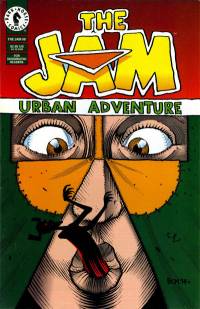
There's
Drawn and Quarterly, of course, one of the best comic book publishers in the world, located right here in this city, a few blocks away from my home. Over the years I've gotten to know
Chris Oliveros and he's a great cartoonist, a fine gentleman and even more rarely, an ethical businessman. One of the good ones! As fate would have it, his tastes lie in other directions and my work can find no purchase there. Sometimes I might help with production stuff, but that's about it. You have to be philosophical about these things.
Eventually a Canadian cartoonist will be drawn to the United States or Europe to try and find work. However, working with the larger publishers is far more regimented; you usually have to follow a certain style and there are editors and unrealistic deadlines. These editors are often in charge of distributing the work and the process of approaching one can be very political. I've spent a great deal of time listening to work/horror stories and considered that particular environment and I have come to the conclusion that it's not for me. It's far more important to protect my inspiration, the odd quirk that makes doing this labor-intensive thing actually fun, than it is to work on [insert famous superhero character's name here.] and be paid a bit of money but told what to do every step of the way. I believe that would destroy my inspiration, which is all I've got and has made my life good up until now, money or no.
The money will come when I create something that people want and can mass-produce it myself. I'll figure it out eventually.
So I'd say that to be a cartoonist in Canada is good if you're doing it more for art's sake. There are certainly less distractions. Comic art publishing is in its infancy here and there's a lot of room in the field. You just have to learn to walk through a lot of snow.
 INTERVIEWER: And watch out for the skiers! Tell us about your art training.
INTERVIEWER: And watch out for the skiers! Tell us about your art training.
MIREAULT: Then I have to tell you about my life, because there was very little schooling involved. My schooling was pitiful. I was taught Math by English teachers and Geography by nuns. There was the odd good teacher but most were at best, simple disciplinarians and at worst, abusive despots. I'm sure there were the standard art classes, but zero stands out in my memory. The typical Air Force military base elementary school was meagerly staffed.
My father was a sergeant in the
Canadian Air Force for a time and our family moved to a different base every three years. My dad is a Francophone from St. Come, Quebec. My mom is an Anglophone from Ontario. They were both military police when they met and got married. My sister and myself were born on a Canadian armed forces base in France in the early nineteen-sixties. We moved to Canada a couple of years later, where my two other sisters were born. We lived in St. Bruno and St. Hubert near Montreal, then went north to Val'Dor, Quebec. From there we moved to North Bay, Ontario.

My father retired from the forces after hitting the 20-year mark and took us to Rawdon, a small town nestled in the Quebec countryside about 60 miles northeast of Montreal. It was close to his hometown of St. Come -- notice the religious theme in the majority of place names in Quebec -- and he had family close by. He comes from a family of 12 children, typical of Quebec 70 years ago.
Once installed in Rawdon, My parents took up the operation of the local bus terminal /municipal beach restaurant and had the whole family working behind that counter throughout our teenage years, peeling potatoes, flipping burgers and selling bus tickets to friend and foe alike. Not that it wasn't delicious! I learned a keen appreciation for the Quebec French fry.
Moving so often had prevented me from putting any roots down and it was nice to finally live in a place for more than 3 years in a row. After about 8 years in Rawdon, I moved to the nearest city, Montreal, and here we are and have been for the last 27 years! I love Montreal.
The first activity I remember really enjoying was building WW I and II airplane models, which I believe taught me the rudiments of patience and which inspired the first drawings I can remember really sweating over. They were done trying to copy the profile and frontal view of each of the airplanes I built from the technical drawings usually found on the side of the box that the model had come in. I loved all that artwork and the precisely drawn technical illustrations of the assembly instructions. My favorite manufacturer at that time was the British company,
Airfix. Very well made. Cheers.
I remember spending so much time up in my room building those things that my parents became concerned about why I wasn't running around outside with the rest of the kids. My dad questioned me about whether or not I was sniffing glue. I have never used glue as a narcotic and indeed would've thought it both moronic and physically dangerous to do so, but upon reflection I suppose that it might have been an element in my enjoyment.
In any case I tried to explain to my parents how it was far better for me in my room then outside, where everything was like
Lord of the Flies and I was Piggy. I'd had to wear glasses since the age of eight and it was very difficult keeping them in one piece. I had hung out with my mom a lot up until then, no day-care for me, and she had imbued me with her pacifistic values, which are good and fair and I still hold, but which left me completely unprepared for the somewhat less agreeable reality I would soon find myself embroiled in beyond the doors of our home.
Lacking in any sort of harm myself beyond that borne of awkwardness or stupidity, my fellow kids were always quick to pick up on it and take advantage of it. Hierarchy among my peers seemed based on the possession of a tangible amount of aggression, and I had none. Girls among my peers would volunteer criticisms such as "too nice" and "creepy" when asked. The way I said "thank you" so often -- or even at all -- would drive my companions up a wall. I rationalized that it was just natural selection at work, knowing what I needed far better than I did myself and guiding me away from the successfully average towards things perhaps more profound than the fucking and fighting that seemed promised through any sort of social "success." I would follow that other path. The path of the nerd.
Classic cartoonist-making stuff: your social environment seems to reject you, so you find solace in a solitary hobby. You practice the hobby until it becomes a real skill and gives pleasure to do, and then you turn around and go back out there to try to make a living doing what you have come to love. Now
that seemed like it would be a success far more worthy of the struggle. Making a living doing something you enjoy! Once the money was happening, all else would fall into place with alacrity.
But I wasn't there yet. I went from plastic models to wooden ones, building balsa wood kits of Spitfires, Messerschmidts and Sopwith Camels. I could never resist trying to get them to fly rubber-powered and they could never withstand the punishment. I gradually lost my interest in model building and finally got into social things. Partying, music and motorcycles became more important and a couple of years went by with no art being done at all. The occasional drawing for a girl, a mural on the wall of the gym in my high school.
We had always had comics at home, but no superhero stuff, only Mad magazine, Archie comics, Harvey comics, Disney comics, Peanuts; stuff deemed okay for kids. I read them and enjoyed them, but they never stirred me to make comic art.
It was at the age of 17 that I began to travel to Montreal for school and it was commuting back and forth from the city that caused me to discover superhero comics, having only them to pass the time on the bus. That's what did it. I read them and enjoyed the form but not most of the half-assed content, at least as it was being dished out by the North American mainstream publishers of the 1970s and '80s. For some reason I was sure that I could do it better. I resolved to become a comic artist and to try to make better use of the medium. That's when I began to draw a lot. That's really my art training, drawing as much as I can and even just spending time thinking about it. The hard part has always been maintaining the inspiration required to really work hard. That can be tricky.
I'm still in the middle of training and always will be. The main thing I'm trying to do these days is to preserve my inspiration via keeping the conduit between my conscious and subconscious mind as wide-open as possible and using the themes found there as the springboard for any work I do, providing as powerful a motivation as possible to actually spend those hundreds of work-hours often needed to complete any given project. It takes a lot of strength to get through a job. I find it helps a lot to be able to have the freedom to follow and see where your impulses lead. To have that amount of control provides a very satisfying work experience that I've become used to, spoiling me for the assembly line-type work to be had from mainstream publishers. I'll usually take whatever work the mainstream offers, but it's never regular and that suits me fine.
As an artist, I've always been dedicated to creating entertainment. I think comic art is the most potent form of low-tech communication there is and I seek to more successfully actualize that inherent power and use it to broadcast a persuasive, positive message. To try envisioning a peaceful society that respects the social contract; where we all agree not to harass each other so that we can all stop worrying about simple survival and get on with the business of building our civilization together, perhaps even surviving long enough as a species to eventually travel to other planets and meet other inhabitants of the universe, as advertised in our science fiction. To try and create interesting role models and better systems and hope that life will imitate art.
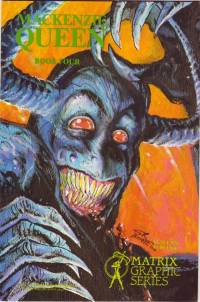
So it was superhero comics that got me drawing and I've learned by doing and looking at what others do. I've discovered the whole art world since then. I had gone to college for a year and a half in Montreal and taken some formal art classes for the first time, which I greatly enjoyed, but comic art was universally rejected by my professors as a worthy endeavor and money was tight, so school soon fell by the wayside as I went through different jobs to pay the rent, doing comic art at night when I could. It was during those days that I made my first graphic novel,
Mackenzie Queen, and started work on
The Jam.
Then, in 1979-80, I got my first art-related jobs, a real excuse to draw all the time. One of them was working as an assistant animator on
the Heavy Metal movie. It was made in pieces all over the world but the Taarna sequence was made here in Montreal. That was the Moebius-style portion of the film, although in true Hollywood-style they decided to replace his character, Arzach, with a sword-wielding babe wearing a tiny metal bikini and an eye-patch. It was a great work environment, with artists from all over the world sharing their skills. And the pay was far better than I was used to. It was a very exciting time for me. That led to a string of jobs in the local animation business that phased out as I began to get more work doing comics. Some of the people behind the TV show
Tripping the Rift I've known since the
Heavy Metal days. Bernie Denk and Michel Lemire were animators at
Heavy Metal, now Michel is the producer and B. Denk is the director of
Tripping the Rift.
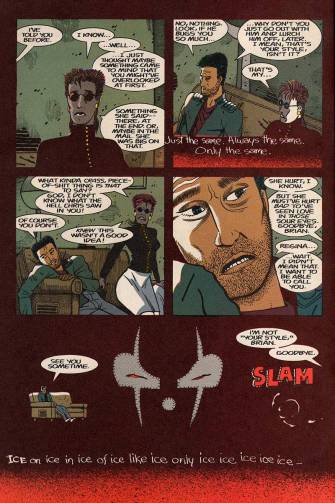
The other major job I got was working on Matt Wagner's
Grendel series, issues #13-15. Matt Wagner lived in Montreal briefly while courting his soon-to-be wife and we shared a studio. There I learned a great respect for his drawing abilities and his creative energy. I worked on
Grendel in various capacities for the next decade.
INTERVIEWER: So your art training was always of the "on the job" variety.
MIREAULT: Pretty much. And in that light I suppose that I've had hundreds of teachers, some of them very good indeed. School may be the best life but life is the best school. Gong.
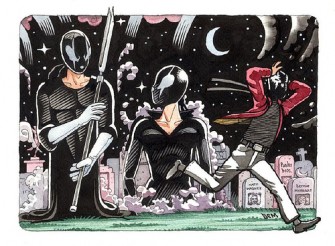 INTERVIEWER: Who do you count as your major artistic influences?
INTERVIEWER: Who do you count as your major artistic influences?
MIREAULT: Other cartoonists. The work of Wally Wood was probably the first stuff that I really noticed as being well-executed. We only had kiddie comics at home when I was young, but my parents would buy
Mad magazine every now and then. While the magazine itself didn't really thrill me all that much, occasionally they would include a reprinted version of one of the original comic-sized
Kurtzman issues. It was there that I first took in Wally Wood and Harvey Kurtzman's "Superduperman." I was pretty young and it never occurred to me to seek out those other original issues but I sure enjoyed it when one would find its way into my hands. They were the funniest thing out there, and I've always loved funny.

I had previously discovered the
Tin Tin series -- written and drawn by
Herge & co. -- in my elementary school library, greatly enjoying getting to read through the whole series with no gaps in the stories, as was never the case with North American comic books.
The Adventures of Asterix, written and drawn by
Rene Goscinny and
Albert Uderzo, was another great series that really entertained me. I was aware of
Spider-Man and
Superman comics but I only ever got to read the occasional issue at a friend's house and saw no great appeal in collecting them carefully to eventually have an actual complete story. It made you feel like a donkey following a carrot dangling from a stick, luring you ever further down the road and eventually making you feel like an idiot. Though I was beginning to feel compelled by the work of
Jack Kirby.
Then I got my hands on some
Pilote magazines from France and discovered
Moebius and a host of other European artists at about the same time that
Heavy Metal magazine first started appearing. I saw
Richard Corben's art for the first time. I've always been completely blown away by his work and he's another one of my absolute favorite storytellers. At this point I was 17-18 and rapidly awakening to the whole world of comic art that was out there. All the old strips from the beginning of the 20th century,
Hugo Pratt, Harvey Kurtzman, Jack Kirby,
Robert Crumb,
Will Elder,
Bernie Wrightson,
Michael Golden,
Steve Ditko,
Will Eisner,
Frank Miller,
Klaus Janson,
Carl Barks, The
Hernandez Brothers,
Dan Clowes,
Chris Ware, The entire E.C. crew; these people have all inspired me in a big way. There's so many more but it would be six months' work trying to remember and name them all. Sometimes it's about their visual style, sometimes it's about their subject matter or even simply an impressive rate of productivity. Matt Wagner and Michael Allred have both had a huge influence on me through our collaborations together. Over the last few years I've also done a lot of work with Max Douglas -- aka Salgood Sam -- and can feel his influence too.
Always it gives me energy to read a well-made comic book. These people charge me up and I have them to thank for my desire to make comic art in the first place. Then there's the whole other world of Japanese comics and animation! Lots of influences for me there, especially in the color department. Of course by now, 25 years in, there's also everyone I've ever associated with in this field. Fellow cartoonists, writers and comic art enthusiasts are usually more than willing to discuss technique and it all has an influence, whether conscious or subconscious. Many of my friends are cartoonists here in Montreal and we chew the fat about comic art all the time. I just listen and collect all the storytelling bits that I see and like and then try to assemble them all in one place, in my work. I don't feel like I'm creating anything new so much as simply voting for what I think works well and should be carried forward as a comic art storytelling convention. For example, I think the Japanese have been ingenious for -- among many other things -- their creation of numerous emotional symbols for use in their comic art; the oversize sweat-drop that symbolizes embarrassment, the stylized veins on the side of a character's forehead symbolizing anger. I think these really work and have long-since adopted their use myself.
 INTERVIEWER: What kind of equipment do you use to make your comic art?
INTERVIEWER: What kind of equipment do you use to make your comic art?
MIREAULT: These days everything I do is digital except the odd commission that I'll get through the internet asking for a custom-made piece. Working on paper is always fun and you don't forget how to do it just because you've been on a computer for the last decade. I find that experience with paper translates to digital and visa versa.
When I work on paper, I like to use a C-6 Speedball -- or something like it, with a small square tip -- pen nib. Originally I would use it only for lettering but I soon became enchanted with its line, using it for all major contours. It was no good for fine lines however, and I eventually settled on a permanent marker, The Pigma Micron .005, for making those. Paper was always an issue. The better the quality, the less bleeding the ink would do. Good Bristol board is expensive however, and due to financial constraints I found myself often working on the cheap stuff and having lots of problems. Eventually I started working on Vellum; the same stuff architects use to draw plans on. It really has the best surface for inking and its transparent qualities make it well suited for light-table work and tracing pencil art. It also makes a much more compact pile of art than three-ply Bristol board might, and so is easier to store.
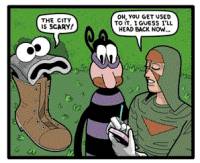
I would always use a brush for different things, experimenting with it inspired by the beauty of Chinese calligraphy and the feathering of Bernie Wrightson and Charles Burns, but it was a maze that I would get lost in, spending hours on things that should've taken minutes, and I eventually just went with the pen nib, using a brush only to fill in blacks. When I was working on the original
Heavy Metal movie, I spent a lot of time in the cel painting department and was soon coloring my own comics on cel, using leftover paint from the movie production, inspired by the coloring in Japanese animation. When I wasn't using cel paint, I liked to watercolor stuff using Dr. Martin dyes. Hardly lightfast, but beautifully clear colors! I once splurged on a 50 bottle set and they served me well for years.
Eventually computers trickled down to consumer level and I got one. Since then I've slowly come to depend on them as an unending source of the best paper, opaque ink, vivid colors and brushes I've ever had. Finally, a white-out that works! Finally, I don't have to go to the photocopy shop for paste up stuff all the time. It puts a lot of power into your hands. And it's an incredibly efficient storage system. And an art delivery system! All-in-all, a wonderful democratic advance to a cartoonist. Now everyone has the same tools and the playing field is more level.
Now when I draw, I'll open up either Photoshop or Flash, depending on the look I want and using a small Wacom tablet, do my drawing. I'm using more reference, thanks to Google Image search, and sometimes venture into the realm of collage. In the case of
Tripping the Rift, an established property, I've been using a lot of reference provided by Cinegroupe Animation. The computer just makes it all possible.
 INTERVIEWER: So you're pro-computer as far as art goes.
INTERVIEWER: So you're pro-computer as far as art goes.
MIREAULT: Very much so.
INTERVIEWER: That pretty much wraps up the interview. Can you tell us about any upcoming projects?
MIREAULT: Well, I was recently contacted by
Oni comics and writer Joe Casey to work on a four-issue series called
Romantic Unbound, to feature the relationships/adventures of Hercules in modern-day Los Angeles. That sounds fun and I hope it works out. I've always had a fondness for Greek mythology, ditto romance comics.
I have to finish my current jobs first, though.
I hope 2008 is a good one for everybody and that I'll see you in the funny papers.
*****
* illustration from Mireault's site
* panel from a webcomic featuring The Jam
* page from the as-yet-unplaced Jam graphic novel
* panel from Tripping the Rift work
* illustration from Black Gate
* illustration featuring Mike Allred's Madman
* classic The Jam cover
* illustration of Frank Zappa
* another The Jam cover
* Hi-Hat webcomic
* Johnny Carson illustration
* Mackenzie Queen cover
* page from Grendel work
* Grendel illustration
* well-traveled illustration of Jack Kirby
* illustration from Mireault's site
* another panel from that The Jam webcomic
* Wonder Woman illustration
* fantasy illustration
*****
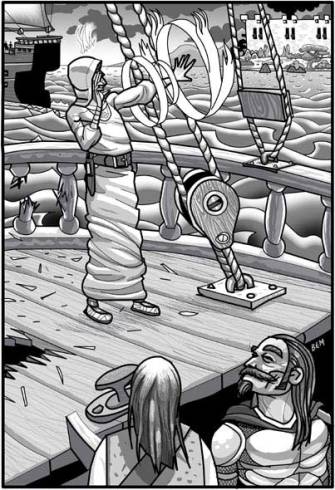
*****
*****
posted 5:00 am PST |
Permalink
Daily Blog Archives
November 2019
October 2019
September 2019
August 2019
July 2019
Full Archives


